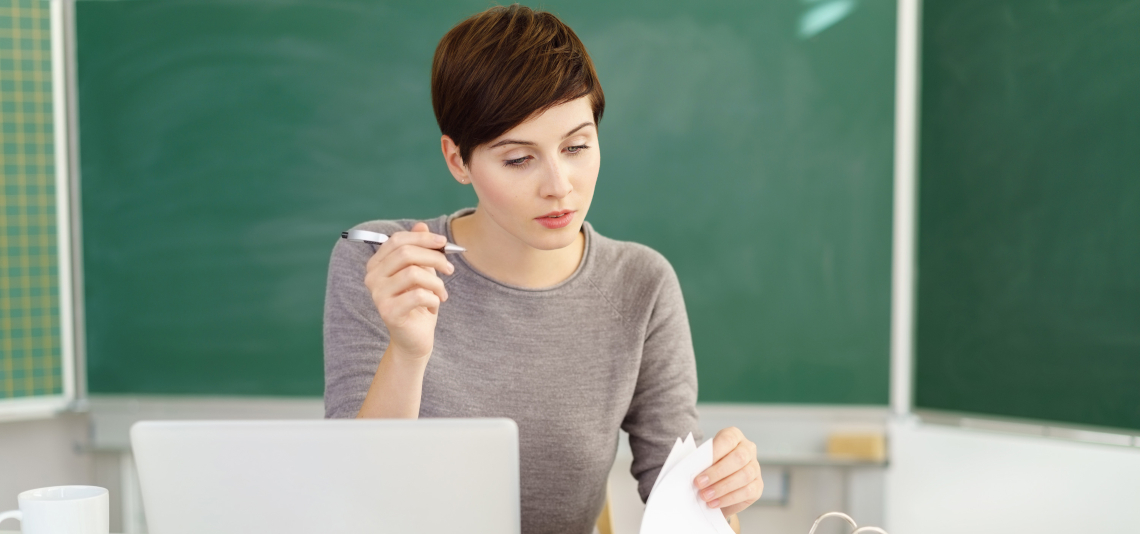Disengagement during class is a major problem as it affects learning. All teachers know how frustrating it is to deal with disruptions. In fact, off-task behavior can take away a few hours each month, meaning that a lot of lesson time is lost.
However, despite the obvious need to better prepare teachers to deal with classroom management, only 42% of teacher preparation programs offer significant feedback to their student teachers in this area, according to this 2016 paper by the National Council on Teacher Quality.
There’s certainly a lot of room for improvement. Students usually display off task-behavior when they find other activities in their environment, use self-distraction, or are interrupted by peers. But just knowing the causes is not enough for teachers to know how to deal with it.
Here are six ways in which teachers can successfully manage off-task behavior:
1. Think proactively
Some teachers love the benefits of starting off each day by being more proactive in their approach to classroom management. Greeting each student at the door as a method of connecting with them is a great example.
You can also be more assertive from the beginning and make it clear from the beginning that off-task behaviors are not acceptable. Establish classroom rules together with their students and keep a calm demeanor at all times.
Another great tip is to present the agenda for the day or a to-do list so students know what they’re supposed to be doing at all times.
2. Optimize their environment
Students get sidetracked by their surroundings all the time. After all, most of us have stared wistfully out the window at some point during classes. A classroom can be designed to engage students and improve their focus. We have talked about how active learning classrooms are changing Higher Education, and I believe that it can be the same for K-12.
Regardless, to minimize distractions, you can change the seating arrangement and go for U-shaped arrangements, desks for group discussions or flexible furniture that allows them to quickly switch from one activity to another.
Read more: Smart classroom furniture for the 21st century students
3. Use reminders
Teachers that successfully manage disruptions employ a set of techniques to make students pay more attention. They know that students’ focus dwindles as time goes by and that it is not their fault.
For example, you can give them verbal reminders by asking “What are you supposed to be doing now?”. Nonverbal ones work just as well, whether it is setting a sound on your phone or choosing a hand gesture that signals it is time to go back to the task.
It’s also effective to remind them that they need to stay on track before the task begins. Simply reminding them about a previously established rule can make all the difference. It’s also harder for them not to follow a rule since you’ve already discussed it together with them (see number 1.)
4. Assess the activity
It’s difficult to come up with something new every day. And, as teachers like to point out sometimes, they are not there to entertain students. While that is true, sometimes the activity is not the best for what you are trying to accomplish. Maybe it is not challenging enough or it is too difficult for them, in which case they will try to “escape” mentally or by displaying disruptive behaviors.
In this case, you can adjust your teaching strategies to better engage students. For example, a study suggests that students are more likely to be on-task in small group activities rather than whole group instruction.
5. Actively supervise students
By actively supervising students, you are also interacting more with them. Active supervision isn’t something that only small children need. It also helps older children focus when you simply stand next to them more often.
Of course, that also means using more open body language, by making eye contact and smiling. When a student is being particularly disruptive, don’t isolate them. Instead, bring them to sit near you or in front of the classroom.
6. Give them breaks
Sometimes, instead of continuing the lesson, you need to just pause and assess the situation. Usually, there are just a few students that need more guidance to pay attention or are being disruptive. In this case, you need to speak individually with them. Otherwise, if the whole group is distracted by something, you might need to pause the lesson altogether and figure out what is happening.
Sometimes it can be as simple as a dip in energy levels or maybe they are just restless. You can try to do a three-minute icebreaker exercise such as Simon Says. Some students focus better when doodling so don’t reprimand them for doing that. Overall, it is better to take a five-minute break than have students that can’t focus for the entire duration of the lesson.
Keep in mind
Whether they come from the environment, their peers, or self-distractions, off-task behaviors are always going to be there. The most important takeaway is that teachers can optimize the environment and apply certain techniques to help students improve their focus.
Whatever you do, it will not be perfect. Building a relationship with students takes time and so does a more empathic classroom management approach. In the long run, this will certainly pay off.







